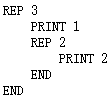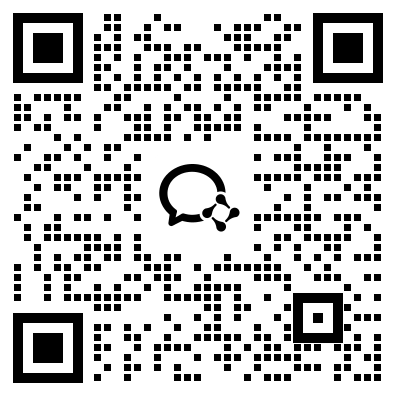Bessie is learning to code using a simple programming language. She first defines a valid program, then executes it to produce some output sequence.
Defining:
A program is a nonempty sequence of statements.
A statement is either of the form "PRINT c" where c is an integer, or "REP o", followed by a program, followed by "END," where o is an integer that is at least 1.
Executing:
Executing a program executes its statements in sequence.
Executing the statement "PRINT c" appends c to the output sequence.
Executing a statement starting with "REP o" executes the inner program a total of o times in sequence.
An example of a program that Bessie knows how to write is as follows.

The program outputs the sequence [1,2,2,1,2,2,1,2,2].
Bessie wants to output a sequence of N (1≤N≤100) positive integers. Elsie challenges her to use no more than K (1≤K≤3) "PRINT" statements. Note that Bessie can use as many "REP" statements as she wants. Also note that each positive integer in the sequence is no greater than K.
For each of T (1≤T≤100) independent test cases, determine whether Bessie can write a program that outputs some given sequence using at most K "PRINT" statements.
INPUT FORMAT (input arrives from the terminal / stdin):
The first line contains T.
The first line of each test case contains two space-separated integers, N and K.
The second line of each test case contains a sequence of N space-separated positive integers, each at most K, which is the sequence that Bessie wants to produce.
OUTPUT FORMAT (print output to the terminal / stdout):
For each test case, output "YES" or "NO" (case sensitive) on a separate line.
SAMPLE INPUT:
2
1 1
1
4 1
1 1 1 1
SAMPLE OUTPUT:
YES
YES
For the second test case, the following code outputs the sequence [1,1,1,1] with 1 "PRINT" statement.

SAMPLE INPUT:
11
4 2
1 2 2 2
4 2
1 1 2 1
4 2
1 1 2 2
6 2
1 1 2 2 1 1
10 2
1 1 1 2 2 1 1 1 2 2
8 3
3 3 1 2 2 1 2 2
9 3
1 1 2 2 2 3 3 3 3
16 3
2 2 3 2 2 3 1 1 2 2 3 2 2 3 1 1
24 3
1 1 2 2 3 3 3 2 2 3 3 3 1 1 2 2 3 3 3 2 2 3 3 3
9 3
1 2 2 1 3 3 1 2 2
6 3
1 2 1 2 2 3
SAMPLE OUTPUT:
YES
NO
YES
NO
YES
YES
YES
YES
YES
NO
NO
For the first test case, the following code outputs the sequence [1,2,2,2] with 2
"PRINT" statements.

For the second test case, the answer is "NO" because it is impossible to output the sequence [1,1,2,1] using at most 2 "PRINT" statements.
For the sixth test case, the following code outputs the sequence [3,3,1,2,2,1,2,2]
with 3 "PRINT" statements.

SCORING:
Input 3: K=1
Inputs 4-7: K≤2
Inputs 8-13: No additional constraints.
Problem credits: Alex Liang
扫码领取USACO试题答案+详细解析
咨询一对一备赛规划

